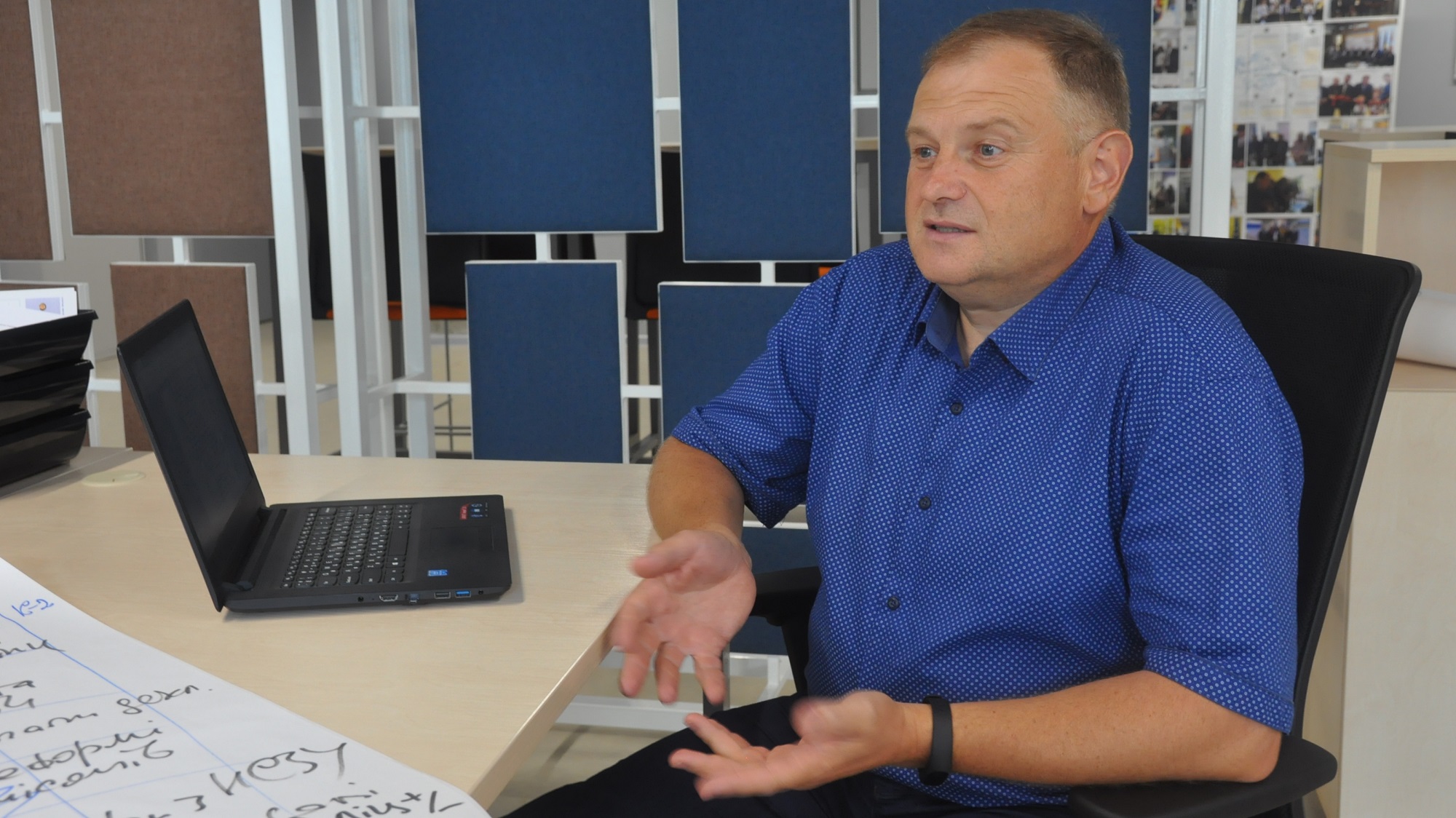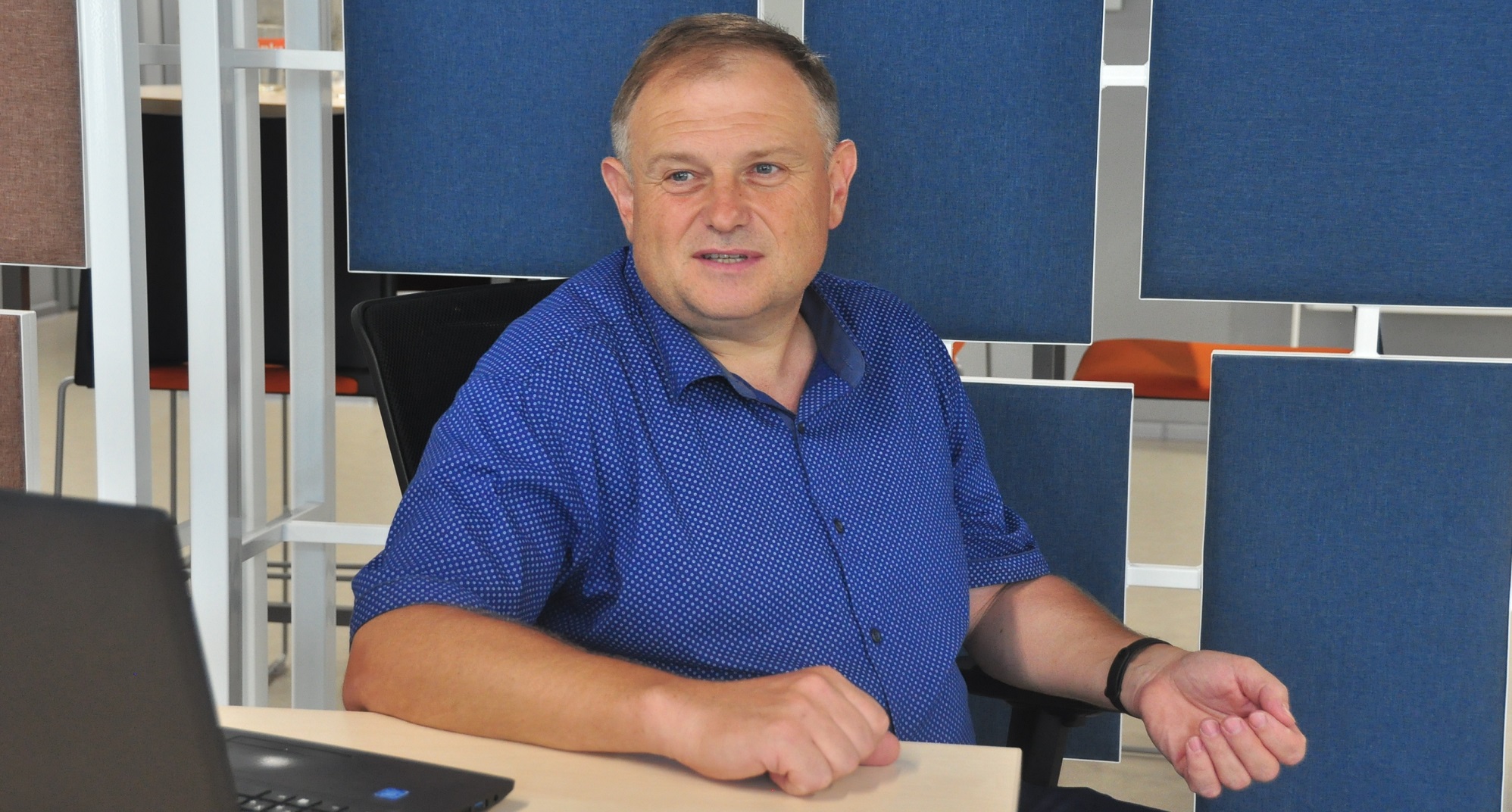“Tell me at least one school that saved the village …”

Serhiy Dyatlenko, educational expert at the Central Reform Office under MinRegion, dispels myths about school education in amalgamated hromadas and tells how the school “sews” the hromada.
By Dmytro Synyak 
Serhiy Dyatlenko has worked for more than 13 years at various positions at the Ministry of Education. He says that the reform of the sector never stopped during this time. However, it is only now that hromadas are able to take part in the reform, making the school meet the needs of parents and pupils. Mr Dyatlenko is currently working as an educational expert at the Central Reform Office.
On good teachers and underfilled schools
Opponents of hromadas’ amalgamation often say that this amalgamtion will inevitably entail school network optimisation. Is it really so?
- The closure of underfilled schools in no way depends on hromadas’ amalgamation. Such schools should be closed in any case. This issue is not political, but rather demographic...…
But isn’t school maintenance an important project?
- Can a teamwork skill be trained in a class of six pupils? Unlikely. Is it possible to call the level of education in such a school a high-quality one? It is hardly possible. Is it possible to teach six pupils quickly socialise? Unlikely. I have recently asked schoolchildren, who are now being brought to hub school by bus, where they feel better: in the previous school, or in the new one. They replied that in the previous school they had only 2-3 friends, and here – as many as 20!
Isn’t it possible to have good teachers in underfilled schools?
- There are such teachers, of course, but they make minority. It happens that in those schools teachers simply spend time at classes while waiting for retirement. Believe me, a good teacher is always in demand and he/she will be in demand even if his/her small school is closed.
Does the school save the village?
We must realise that the phrase “a village without a school is doomed to extinction” has a certain ground. What can you say about it?
- The phrase that the village lives as long as it has a school is perhaps the most common myth. Tell me at least one school that saved the village. Villages are not saved by schools, but by jobs. If there are workplaces, young people will stay in the village, create families and give birth to children. It is then that the school revives.
But the school is also part of the village's infrastructure. Will professional workers with families go to the village if there is no place to educate children in the countryside?
- In fact, we must demand the creation of jobs, because when they exist, the school will live. It will become necessary, and its closure will no longer be discussed.
That is, school network optimisation is inevitable?
- Yes, it is. Both in amalgamated and non-amalgamated hromadas.
And what can you say about the Polish experience? After all, the Poles in their mentality are very close to Ukrainians. How was the problem of small schools solved in Poland?
- The Poles also closed many of such schools and also transferred them to be maintained by communities. However, later these schools sometimes went a different way than ours.

The village of Ruske Pole of the Tyachivska AH has to construct additional schools, because the village population is growing, but there is no place to teach children. How to create hub schools in such conditions?
- Probably they do not need to be created there. Hub school is needed where there are many small villages around the centre. If this is not the case, schools are not necessary.
The Nedoboyivska AH of the Chernivtsi Oblast cannot build a school required by the hromada centre for a long time. They have no money for this. What should they do?
- The only amalgamation cannot solve all the problems at once. Although I am convinced that the Nedoboyivska AH will find funds for the construction of a new school: for example, with the help of the State Fund for Regional Development.
Hromadas’ efforts to improve school education are often reduced to repairing schoo ls and providing them with a variety of equipment – from laptops to specific laboratory appliances. But agree that all this has rather indirect impact on the the quality of education…
- Now, for the first time in the years of independence, the state drew attention to the central figure of the educational process – the teacher. If you prove that hromada needs you, you continue working. The teacher should not be a “lesson conductor”, he must take care of the final result: knowledge and skills of pupils.
What do you think: should AHs establish their own educational departments, or is it better to leave the educational branch in the rayon?
- Why, then, should amalgamated hromadas be formed at all? Their management is much more effective than the rayon’s one.
What is the role of school in uniting hromadas?
- It is exceptional! The school “sews” the hromada. Besides, the school has the ability to train staff on the ground.
The full version is available in Ukrainian – please click HERE
06 December 2025
Мінрозвитку закликає громадськість та експертів...
Міністерство розвитку громад та територій України продовжує роботу над оновленням підходів до оцінки спроможності...
05 December 2025
Як громадам бути почутими в ЄС | П’ятниця із Cities4Cities
Як громадам бути почутими в ЄС | П’ятниця із...
Україна входить у черговий переговорний етап євроінтеграції – і місцеве самоврядування тут відіграє ключову...
05 December 2025
Швейцарсько-український проект DECIDE...
Протягом п'яти років реалізації реформи децентралізації управління освітою продовжує залишатися критичним чинником...
04 December 2025
Багаторівневе врядування на практиці: підсумки регіонального форуму Polaris
Багаторівневе врядування на практиці: підсумки...
3 грудня у Полтаві відбувся регіональний форум Програми Polaris «Розбудова системи багаторівневого врядування» –...